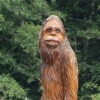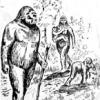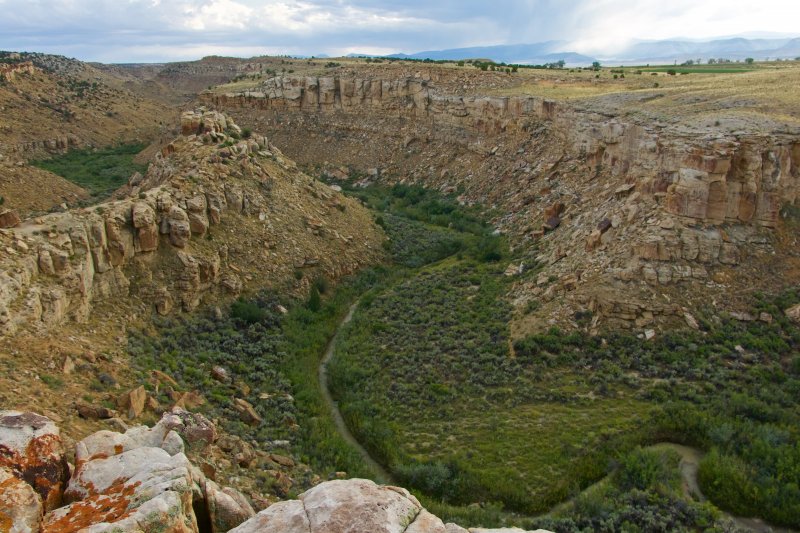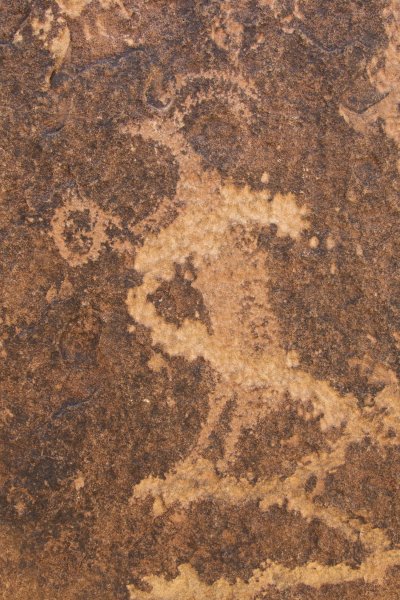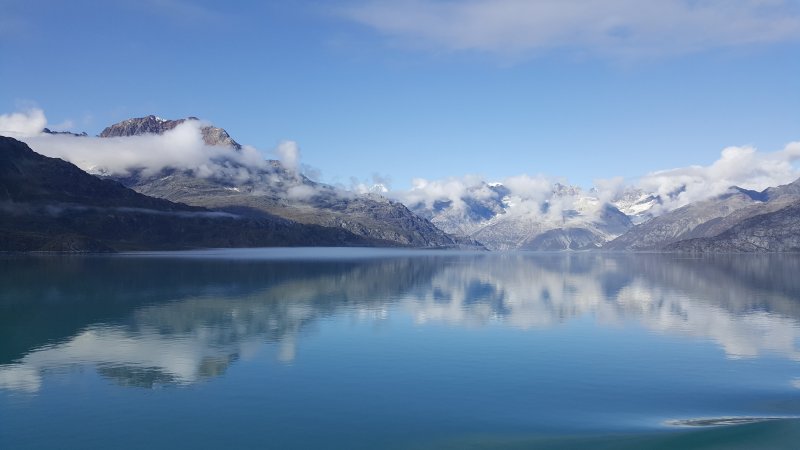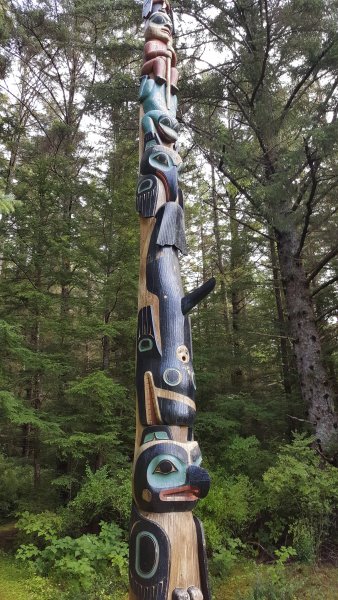Leaderboard
Popular Content
Showing content with the highest reputation on 09/16/2019 in all areas
-
I spoke briefly with Derek, they got a report back from the labs results on the samples. They did in fact get DNA fragments from many different species but much of the genetic information was simply destroyed by environmental conditions ( UV light, rain, temperature and collection ). They did manage to locate sequences within the " Human range " but again, they are just remaining fragments and it was not enough to say more than that. This result could mean either that the samples are contaminated or that Sasquatch DNA is close to human and that the fragments of DNA recovered are shared with modern man and as result can not be distinguished ( at least not with the recovered segments ). With that result the best response is to go out and examine the topography and ecological circumstances to be able effectively locate fresh nests and collect new samples. This is the focus now that the OP collectively are working to accomplish, Shane is actively working on the area to find similar locations for survey.2 points
-
There is little likelihood that BF populations in the Appalachians and PWN have intersected since the European settlers surged Westward. They probably did not before that either because of the distances involved and isolation by the great American plains. In other words there are now pockets of diverse populations of BF that have several and perhaps hundreds of generations of genetic isolation. One can expect increasing genetic diversity and differences in appearance between distantly isolated groups. Perhaps the ones in Florida were isolated first because of the flow of settlement in the East Coast? The last to be isolated would be the ones in the PNW since that is were European settlement happened last. Just that might explain why those in the PNW may be more genetically healthy because interchange of individuals could still be conducted between various BF tribes. Genetic health would promote less genetic deviation and differences in appearance.2 points
-
If and when a body or bones with viable DNA are sequenced I suspect we will find that it has been sequenced before. I think the glitch happens when it mostly looks human, but parts do not. So the assumption is made that it is contaminated or fragmented human. I do not think a DNA lab will ever make the leap until they have a big chunk of BF flesh to test and verify that they can repeat the test with the same results. But what it is will not be evident, only that the chunk of meat has a lot of similarities to human, chimpanzee, and bonobo. It could be that if it is very close to human, a lab might even call in law enforcement. The skeleton or body has to be examined to define the morphology of the species. That is the tall order but in this case necessary to prove existence. DNA alone will not work.1 point
-
I can mostly agree, if you get really fresh blood or a good deal of hair with follicles then you could get a full genome. A tall order it seems.1 point
-
I do believe we are looking at individual variation and maybe differing genus like trout populations in the east and west for instance based on possibly regional influences/barriers, but many of these guys may be trim like the most athletic NFL linebackers; I suspect you could call many of them massive. The way sasquatch have been viewed hauling away white-tails, razorbacks and elk I would say they have muscle mass above and beyond for sure in many cases. I was more talking height here than anything. My night-time education involved a 4 1/2 to 5 1/2 footer and I did not get the impression it was a juvenile sent on a counting coup adventure to directly approach me. It was not alone that night though and two others may have been on a counting coup mission. Aging in sasquatch is a little too far out there for me and others to probably speak to however. Based on some TN sightings they do suffer from bone infections or strokes, probably dental problems just like humans. I'm primarily in the southern appalachians now and have given thought as to how a wide body, tall sasquatch fits nicely in the North Cascades but maybe not so much in the Blue Ridge, having spent some time on both coasts now.1 point
-
If it evolved in North America rather than traveling here more or less in the form we know it, it's not an ape, it's a monkey. There are examples in zoology of similar-ish creatures filling similar niches that come from different roots ... essentially if a niche is open, something will evolve to fill it. An example is the mara or patagonian hare which is a rodent whose ancestors adapted to fill the niche since there are no true hares there as would be found in similar niches in Europe. There are a couple things seemingly wrong with the true monkey idea. First, no true monkeys that we know of have grown anywhere that large, second, none are bipedal, third, there's not a single hint in the fossil record from North America for either current or previous species of that size. For it to be correct we'd have to be breaking new ground in several areas at once ... seems less probable than an immigrant from Asia (or even Europe). Everything seems to point towards something from genus Homo sharing a close common ancestor with us, the question is ... what, which ancestor, and how far back? H. erectus is a serious possibility but far from the only one we should consider. IMHO, we should not take any cards off the table. None. We simply don't have enough information to support doing so, all we have are belief systems. Filtering what you will look at because if you find it, it won't fit your belief system, is about the surest way I can think of to be wrong. It's dogma, no more, no less. MIB1 point
-
Tried a different sort of area last time out, just outside of a small town and beyond the farming belt around it. Camped above a nicely flowing stream, the green patch upper right is a farm field. Had a tolerable view while sipping on an Old Rasputin, watching a 4 point muley buck very warily make its way through the brush below and waiting for darkness to head down canyon to a nice petroglyph panel to offer a bit of tobacco and mojo to the Ancients in exchange for the view. Last time we were here we did the same nighttime hike down and when the wind shifted, there came with it a strong musky animal smell that even i picked up and i can't smell a thing out in this dry climate, uneventful this time, just a nice hike under a gibbous moon til it was obscured by clouds. Camped out on cots till the thunderstorm arrived at 3am, lightening illuminating the valley and distant mountains. i scrambled to get the tent set up and cots stashed, made it in with about 3 minutes to spare before the wall of wind and rain hit. It didn't last long, things quieted down to where we could hear 3 different packs of coyotes howling and yiping to one another along with a pair of great horned owls calling. That activity kept up intermittently til dawn. This area has had the most animal activity we've seen. I've scrambled around the state looking for the spot to dedicate a focused search, a lot of possibilities just need to take a block of time. Bi-pedal Bighorn:1 point
-
Just got back from seven day Alaska cruise with my wife. I haven't been very active the past few years due to health issues. Doing better now dropped 50 lbs getting out walking and plan to get out there and do more time in the forests. We saw dozens of hump back whales some Orcas, porpoises, sea otters, seals but no bears. Lots of salmon in Sitka AK.1 point
-
I think you have hit on an interesting point. If BF made the Asia to North American migration, what drove that? While a Bering land bridge would make it easier, why migrate unless there was a need for such a difficult journey. I just left Alaska. It became very evident to me that a migration North to South in Alaska would be a very difficult thing without boats. Every glacier dumping into the sea is a formidable barrier and there are many ruining out into the ocean from the mountains to the East. Travel Eastward is just as difficult because of North South running major mountain ranges. What would drive major migrations human or BF? The disappearance of mastodons is thought to be overhunting by humans. DId that drive humans North then South into North America in search of more game.? One mastodon kill likely fed a tribe for months. Did BF simply follow the humans as the humans migrated? They seem to have been watching us for thousands of years. Perhaps unlike their smaller cousins, BF because of their size were able to carry off what mastodon humans could not. We have modern reports of BF grabbing human shot deer and elk and carrying it off. Even more unlikely, but possible, is that before wolves bonded with and began to protect humans, perhaps BF protected humans from Saber Tooth tigers and other large predators in exchange for scavenging rights. There were some very large and nasty predators during the last ice age. The point is, what drove them to migrate or did they? Maybe they migrated in an earlier ice age and that explains their large differences from humans? That would put them genetically more divergent from humans in the primate family tree. With chimpanzee and bonobo DNA being 99% the same as human, BF has to be nearly the same. That suggests to me that until a BF is on a lab table for DNA testing, random tests like this nest will always find human looking DNA fragments because they are 99% the same. That tells me DNA testing on anything but a dead BF or blood from one is a waste of money.0 points
This leaderboard is set to New York/GMT-05:00


